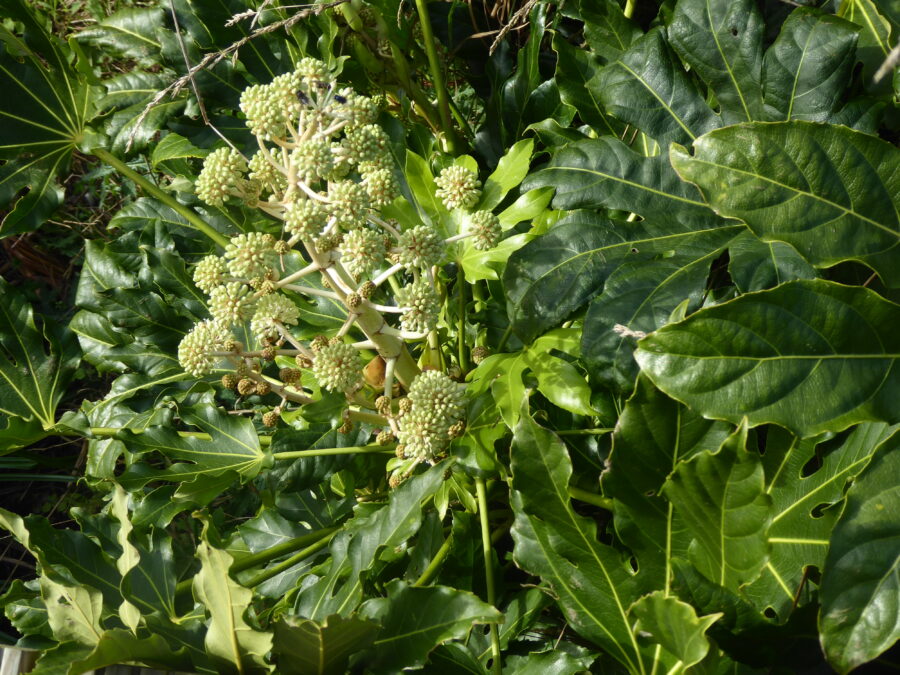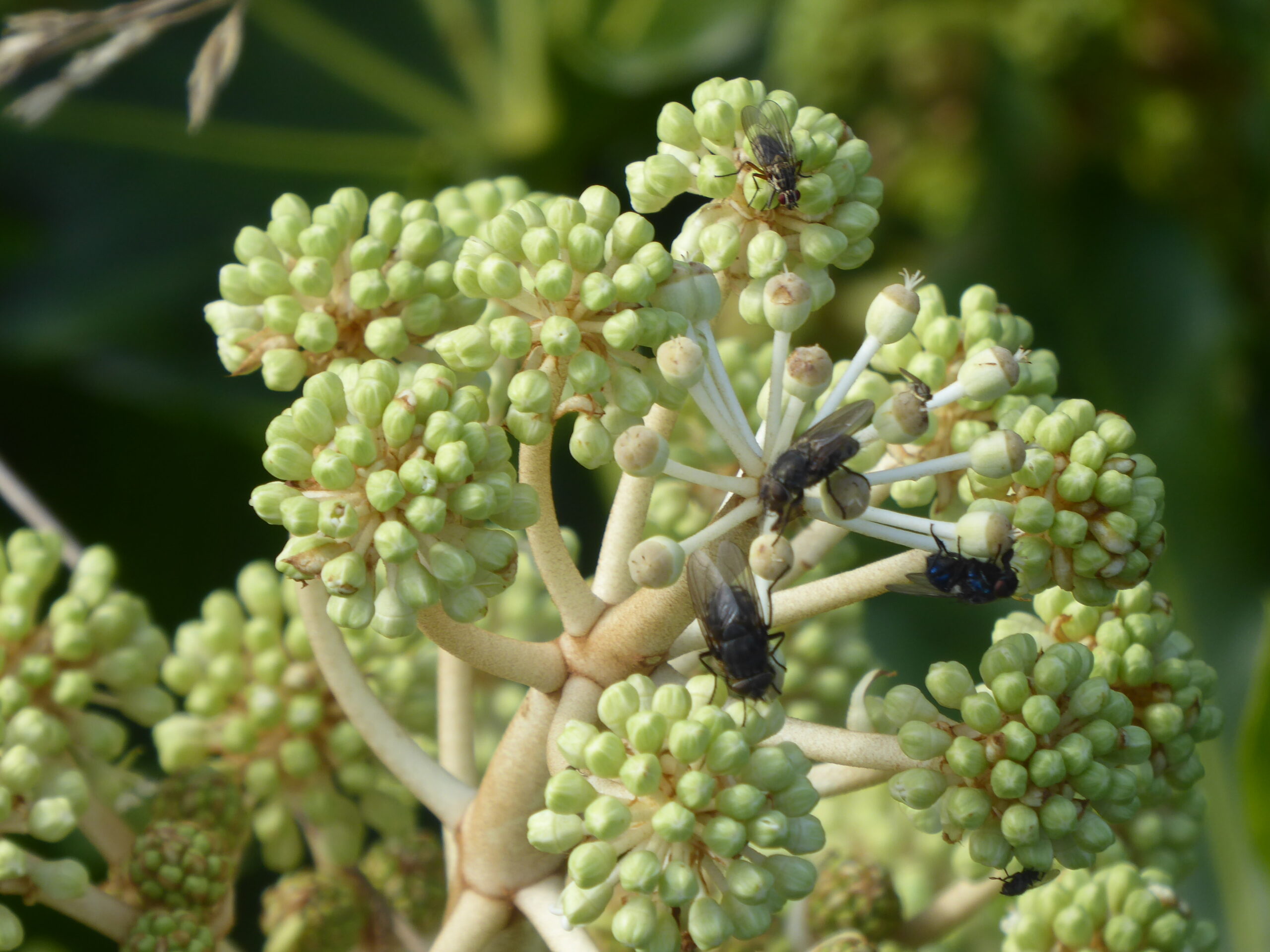Our two Fatsia japonicas are in flower on the bank of the watermeadow. We have been calling them castor oil plants, but I now know that the real castor oil plant is highly toxic, containing ricin. Castor oil used for medicinal purposes has had the ricin removed. Our plants are, in fact, False Caster Oil plants. Phew!
The false castor oil plant is a non-native species, originating from Southern Japan. It is a hardy evergreen and is related to the Common English Ivy (Hedera helix), which you could probably work out from the similar flowers.
Apparently it can grow up to 4 metres high and has a similar spread. Our two plants are quite large, and though we haven’t seen them in flower before, we have noticed others blooming locally. The flowers appear in the late autumn and, although not a native species, are pollinated by local flies, butterflies, and bees. I saw these black flies and an oscinella frit fly on our flowers. Once pollinated, the flowers will produce dense clusters of fat black berries, which will make a fine feast for blackbirds during the winter.

While I was out taking photos this morning, I could hear ducks, a pheasant and various other chirps. I spotted a great tit, but it flew off before I could focus the camera. The kestrel remains elusive, but a fast brown bird flew towards our kitchen window yesterday afternoon and veered off between us and next door. Perhaps more like a sparrowhawk in its behaviour, it sliced past sleekly in a brown blur, so maybe a kestrel. Maybe something else?
